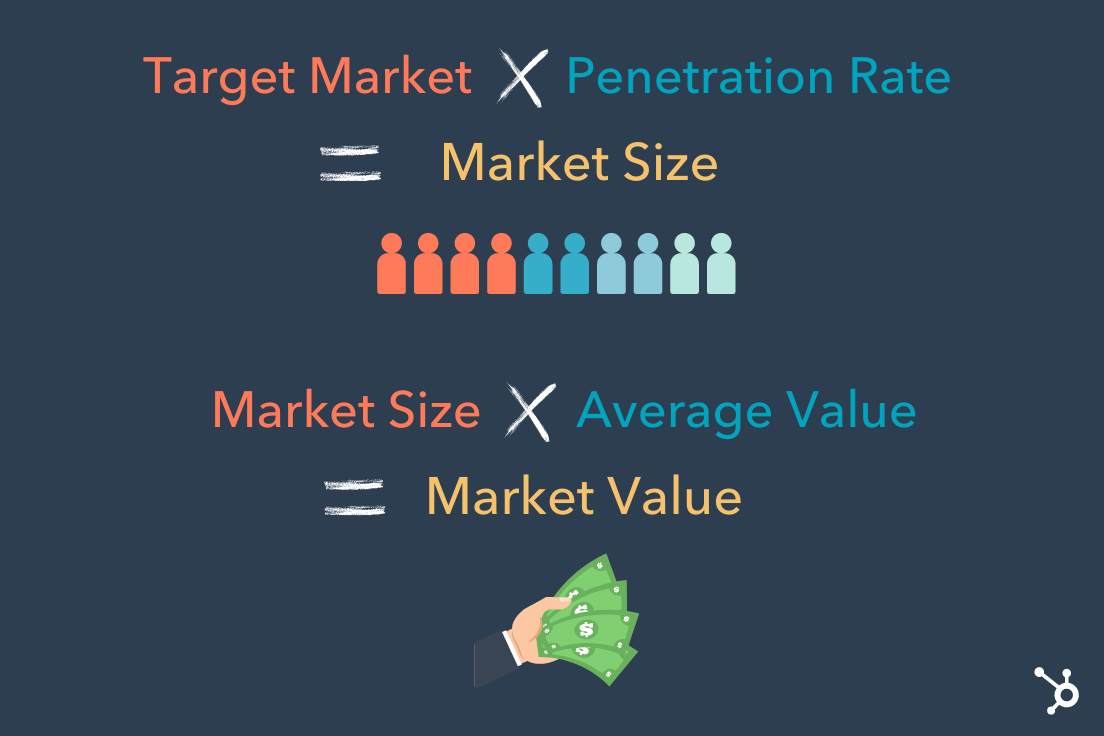When most businesses forecast their revenue goals, they first calculate their total addressable market, which is the total market demand for their industry’s products or services. Put simply, it’s the maximum amount of revenue a business could generate if they captured their entire market.
However, unless you're a monopoly, you most likely can’t capture the total addressable market for your products or services. Even if you only have one competitor, it would still be extremely difficult to convince an entire market to only buy your products or services.
That’s why it’s crucial to calculate the maximum amount of revenue you can possibly generate by selling your products or services to the customers who would realistically benefit from buying your solutions.
This amount of potential revenue is called your market size or serviceable addressable market, and you can use it to accurately measure your business’ potential for growth.
Market Size Example
Let's walk through an example to explore how you'd determine market size.
A Startup Wine Company
Let's say you wanted to start your wine company. Here's how you would calculate market size: First, you'd want to determine how many liquor stores are in the United States — this helps you figure out the total market to which you could theoretically sell your product.
After your research you determine there are 50,000 liquor stores in the United States. Of that total list, you only want to sell to the New England area — including Massachusetts, Maine, and Rhode Island.
You determine your target market includes the 1,000 liquor stores in the New England area. From here, you conduct research and speak with alcohol distributors to determine there's a roughly 40% success rate for wine distribution.
Using this as an example, we'd calculate market size using the following formula:
1,000 liquor stores x 40% = 400 liquor stores
Then, if you assume each liquor store will result in $20,000, you can figure out potential revenue using the following formula:
400 liquor stores x $20,000 = $8,000,000
This means you stand to make $8 million if you penetrate 40% of the total market in the New England area — however, this doesn't take into account your competitors' wine, or all the other liquors available in any liquor store. For this reason, you'll want to remain conservative when guessing how much of the market size you'll win.

How to Use Estimated Market Size
Okay, you have your estimated market size — now what?
Market size helps your business answer the following questions:
- How much potential revenue can we earn from this particular market? In other words … is it even worth our time and energy?
- Is the market big enough to interest us?
- Is the market growing? Will there still be opportunities to earn revenue from this market in 3, 5, 10 years?
Market size is a critical number to know when you're looking for funding. Investors are going to need to know how much money you have the potential to make from a given market. Additionally, it's vital to recognize whether the potential revenue you can make outweighs your business' costs.
Once you have market size, you'll also want to consider how saturated the market already is with your competitors' products. Ultimately, you can't capture the total addressable market (TAM) — some of those people will choose competitors' products over yours. So you'll need to determine whether you have a shot at earning enough consumers out of the TAM to make this a worthwhile venture.
![→ Download Now: Market Research Templates [Free Kit]](https://no-cache.hubspot.com/cta/default/53/6ba52ce7-bb69-4b63-965b-4ea21ba905da.png)








